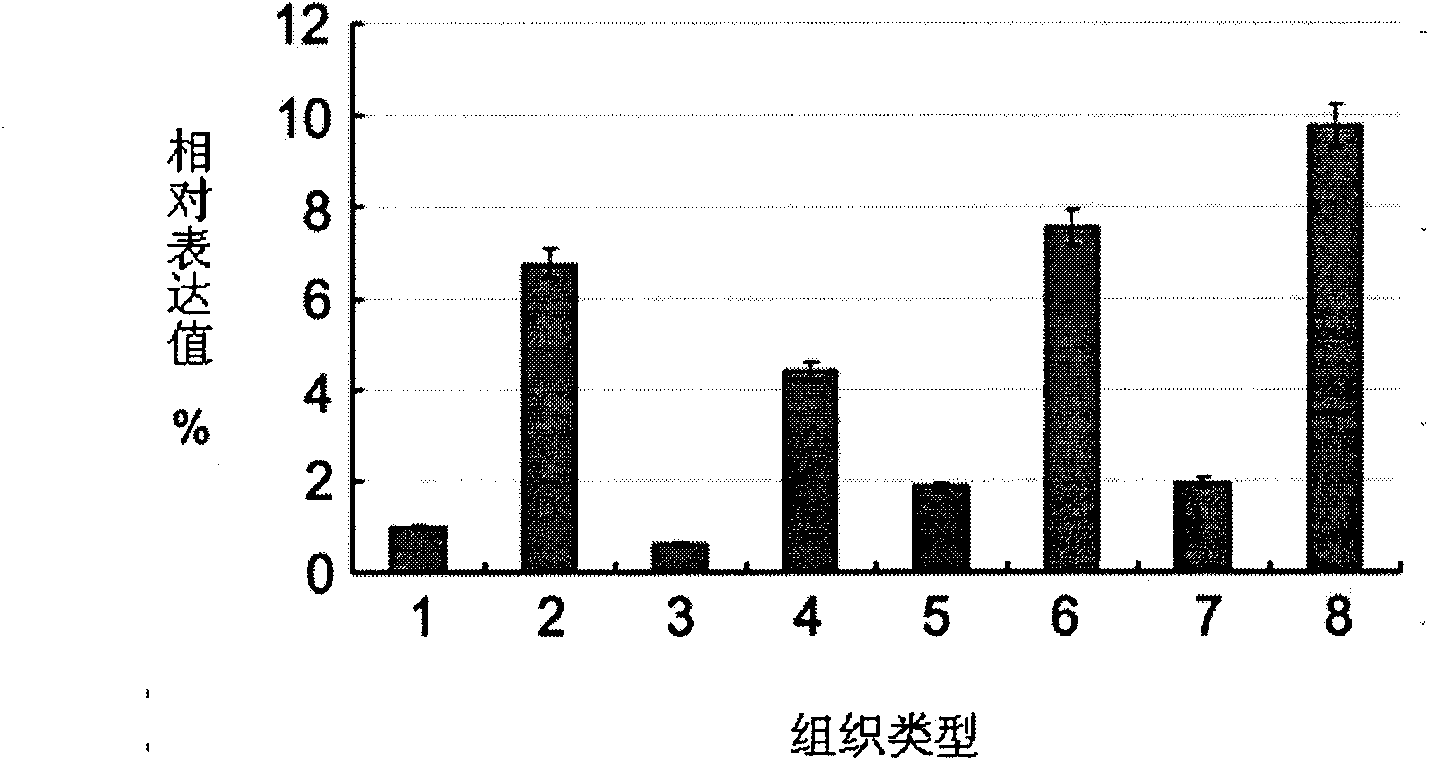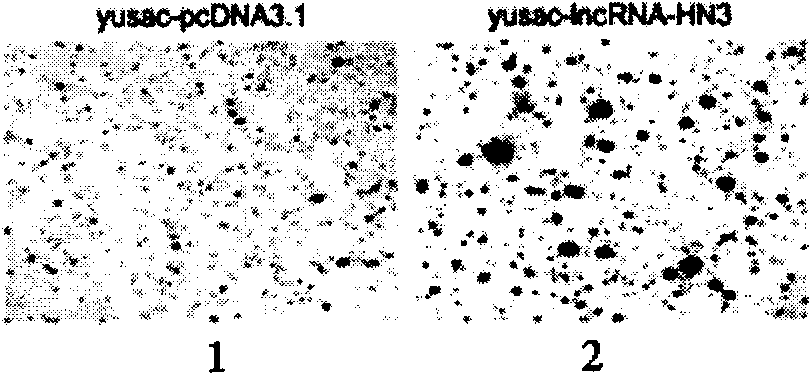Long non-coding RNA sequence relevant to human melanoma cells and application thereof
A melanoma cell, non-coding technology, which is applied in the field of long non-coding RNA sequences related to human melanoma cells and its application, and can solve problems such as tumor diagnosis and gene therapy impact
- Summary
- Abstract
- Description
- Claims
- Application Information
AI Technical Summary
Problems solved by technology
Method used
Image
Examples
Embodiment 1
[0022] Example 1: Cloning and analysis of lncRNA-HN3
[0023] 1. Reagents
[0024] Trizol reagent was purchased from Invitrogen Company of the United States; MMLV reverse transcriptase, DNA polymerase, pfu enzyme, Nde I enzyme, Xho I enzyme and RNase inhibitor were all purchased from Lithuanian Fermentas Company; T7 RNA polymerase was purchased from NEB Company of the United States; random primers were purchased from From Promega Company of the United States; TALON metal ion resin was purchased from BD Clontech Company of the United States; PCR primers were synthesized by Invitrogen Company.
[0025] 2. Bacterial strains, cell lines and vectors
[0026] Human malignant melanoma cells yusac were purchased from American Type Culture Collection (ATCC); E.coli BL2 strain was purchased from Tianjin Tianli Technology Co., Ltd.; PCR-blunt-TOPO vector was purchased from Invitrogen, USA; pET-28a(+) Vectors were purchased from Novagen, Germany.
[0027] 3. Experimental method
[002...
Embodiment 2
[0104] Example 2: Quantitative PCR detection of the expression of lncRNA-HN3 in human malignant melanoma tissues and adjacent tissues
[0105] 1. Reagents, strains, cell lines and vectors
[0106] The conventional reagents, bacterial strains, cell strains and vectors are all the same as in Example 1.
[0107] QuantiTect SYBR Green PCR kit was purchased from Qiagen, Germany.
[0108] 2. Experimental method
[0109] 2.1.1 Synthesized total cDNA
[0110] Using human melanoma tissue and corresponding paracancerous tissue as materials, total RNA was extracted from melanoma tissue and corresponding paracancerous tissue with Trizol reagent (Invitrogen) (the method is the same as 3.1.1 in Example 1). Take 1 μg of the total RNA of the melanoma tissue and the total RNA of the corresponding paracancerous tissue, and carry out reverse transcription reaction with random primers (the method is the same as 3.1.2 in Example 1) to obtain the total cDNA of the melanoma tissue and the corresp...
Embodiment 3
[0115] Example 3: Overexpression of lncRNA-HN3 promotes malignant growth characteristics of melanoma cells
[0116] 1. Reagents, strains, cell lines and vectors
[0117] The conventional reagents, bacterial strains, cell strains and carriers are the same as in Example 1.
[0118] The pcDNA-3.1 eukaryotic expression vector, lipofectamine 2000 transfection reagent, and G418 antibiotic were all purchased from Invitrogen Company of the United States; DMEM medium and fetal bovine serum were purchased from Gibico Company of the United States; nitro blue tetrazolium (NBT) was purchased from From Sigma Corporation of America.
[0119] Perfection 4990 flatbed scanner was purchased from Epson Corporation of Japan.
[0120] BALB / c nude mice, SPF (Specific Pathogen-free, specific pathogen-free) grade, were purchased from Shanghai Slack Experimental Animal Co., Ltd.
[0121] 2. Experimental method
[0122] 2.1 Construction of monoclonal cell lines stably and highly expressing lncRNA-HN...
PUM
 Login to View More
Login to View More Abstract
Description
Claims
Application Information
 Login to View More
Login to View More - R&D
- Intellectual Property
- Life Sciences
- Materials
- Tech Scout
- Unparalleled Data Quality
- Higher Quality Content
- 60% Fewer Hallucinations
Browse by: Latest US Patents, China's latest patents, Technical Efficacy Thesaurus, Application Domain, Technology Topic, Popular Technical Reports.
© 2025 PatSnap. All rights reserved.Legal|Privacy policy|Modern Slavery Act Transparency Statement|Sitemap|About US| Contact US: help@patsnap.com



